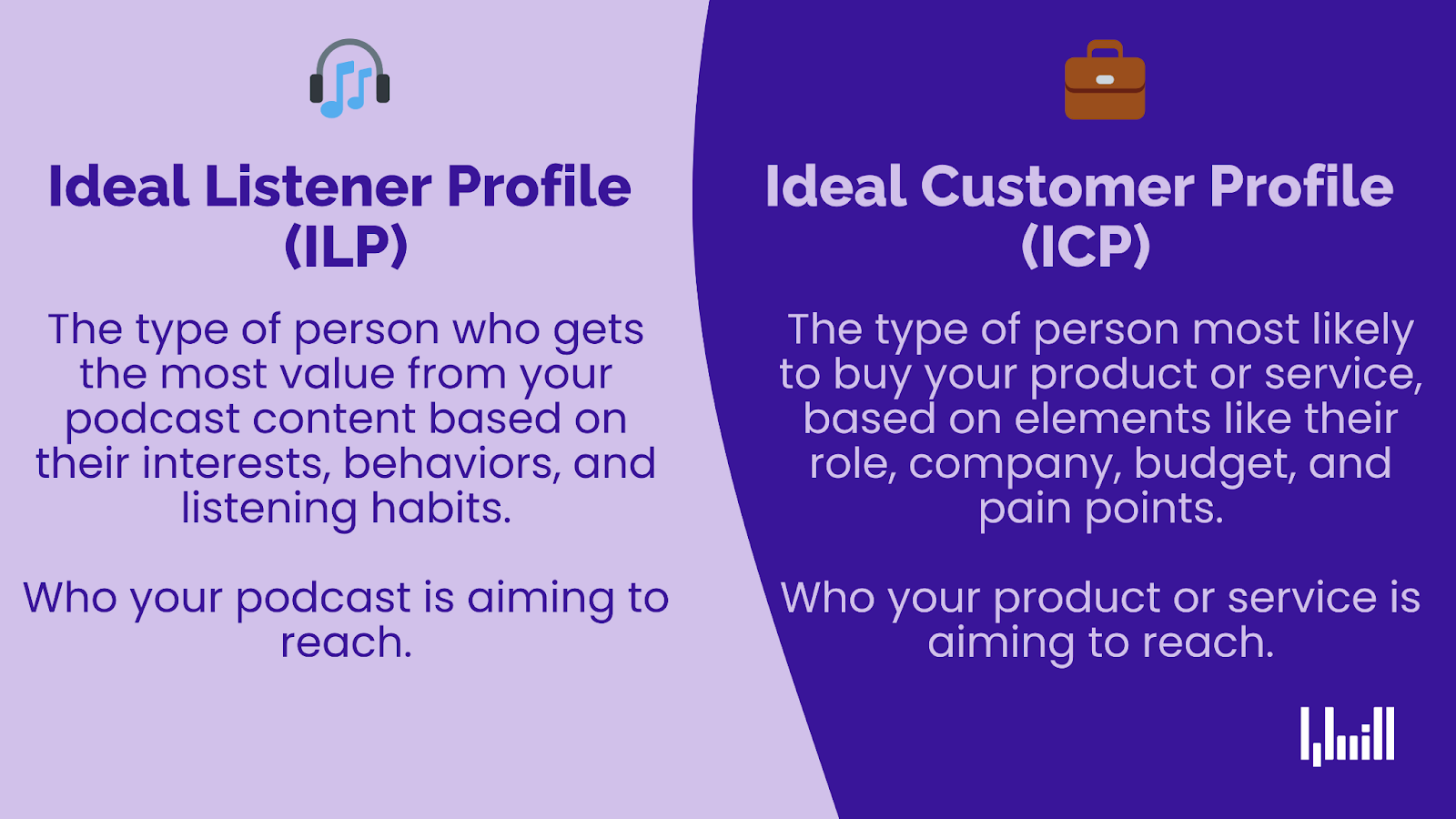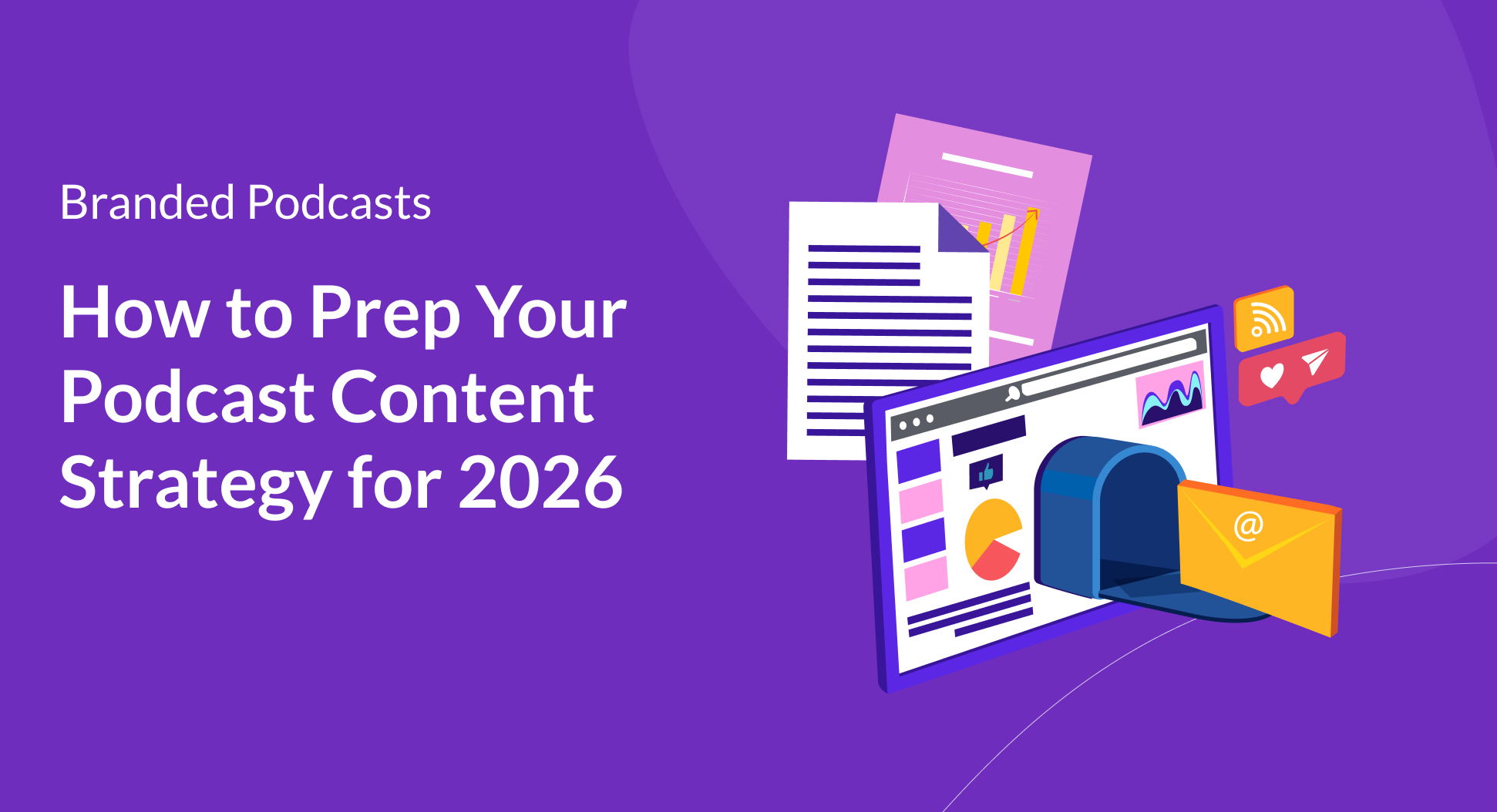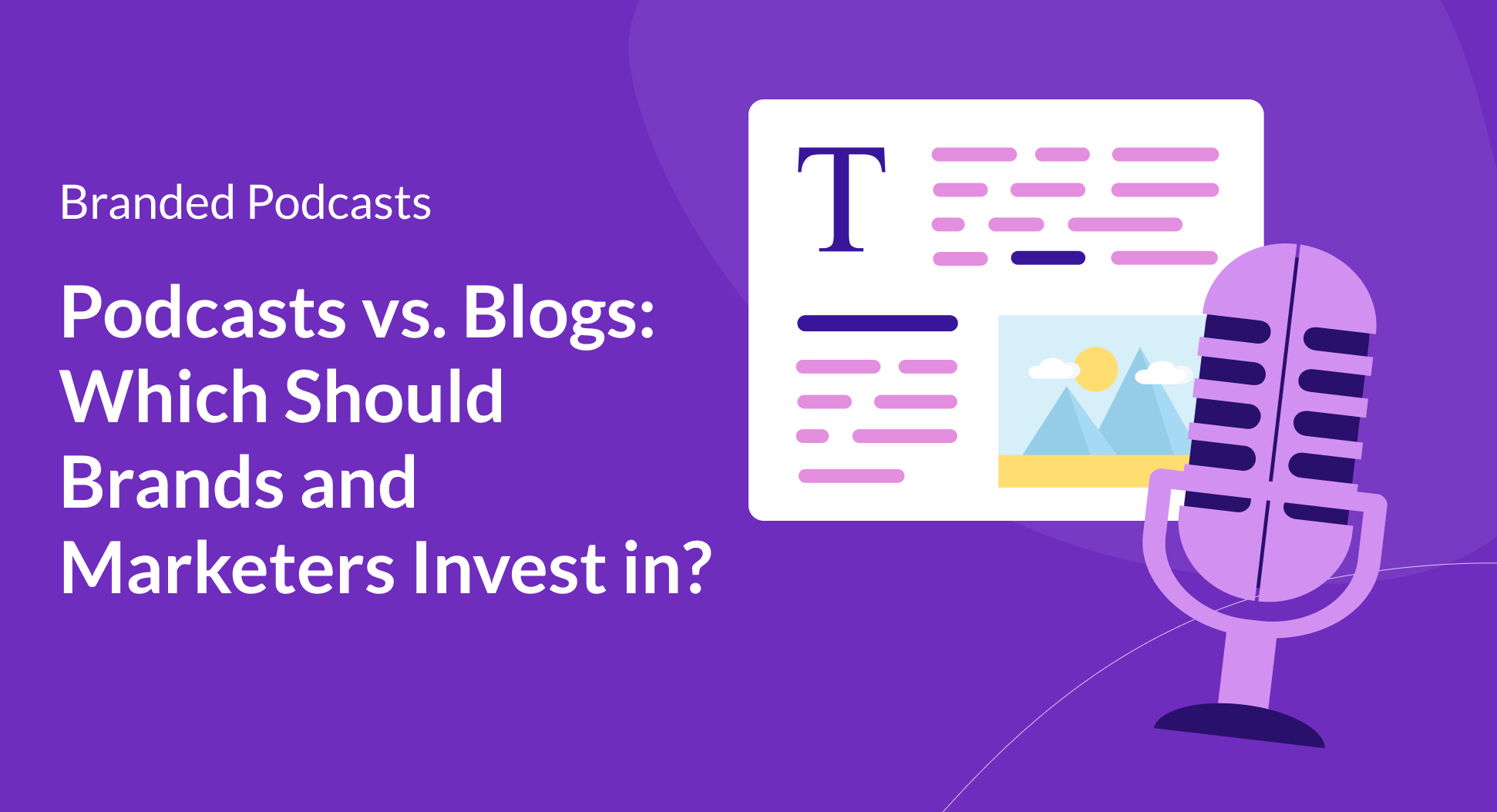Contents
2026 demands a new approach to podcasting.
Why?
The branded podcast landscape is maturing, and so are audiences. Audiences are savvier, competition is steeper, and simply “hitting record” on your company’s show isn’t enough anymore.
Branded podcasts have moved from experimental marketing plays to fully fledged media channels, which means brands now need to decide how they’ll be the first, the best, or the different.
Listeners are on the hunt for podcast content that provides them value. Whether that means entertainment, education, or inspiration, your podcast content strategy for 2026 has to dig deeper into what your audience values most and deliver that with intention.
And here’s the final kicker: podcasting can’t live in a silo anymore.
Brands can no longer treat podcasting as an isolated medium. Your podcast needs to become a core piece of your content strategy, fueling mediums like newsletters, blogs, videos, social media, and even internal teams like sales enablement and HR communications. In other words, it’s time to think about omnichannel marketing.
Don’t worry, I know, we just threw a lot at you. Below, we’ll explore how brands can future-proof their podcast content strategies to create more engaging, measurable, and audience-driven shows in 2026.
The state of branded podcasting entering 2026
Podcasting as a medium is maturing in 2026, and organic growth has slowed.
This might sound like a negative, but it really isn’t. Let me break it down:
A report by Sounds Profitable uncovered that ever-consumption of podcasts has grown from:
- 74% to 75% year over year
- 53% to 55% monthly
- 37% to 38% weekly
This is still growth in the podcast industry, but it’s not the double-digit, high-growth that we were seeing 5-10 years ago. And podcasting at large has always really leaned into the narrative of being a high-growth medium… but that’s about to change.
Sounds Profitable points out that again, these changes in growth aren’t a scare tactic for brands and creators. Rather, they should urge you to shift your podcast content strategy because “just existing” is no longer enough.
Podcasts are competing with all forms of content for attention, and the brands and creators that thrive will be the ones that understand they need to actively compete for their listeners’ attention, understand them, go niche, and provide them with valuable content.
Essentially, you have to be good at what you do, with 83% of listeners citing that “listening to discussions on topics of interest” is the most important benefit of podcasts.
Branded podcast content strategy preparation
Before you dive headfirst into your podcast’s content strategy for 2026, you need to answer two key questions:
Let’s look at both of those:
1. Set podcast goals that align with business outcomes
The first step before getting started on any content strategy, including your branded podcast: What’s your goal? Why are you creating this podcast for your brand?
You need to be able to identify the core outcomes for your branded podcast; otherwise, how will you know whether it’s performing well or not?
Typically, we’ll see brands having a “brand awareness” goal.
It’s not bad… and also understandable that you want to build brand awareness through your podcast, but here are some more specific goals to think about:
- Thought leadership
- Internal culture building
- Event amplification
- Partnership building
- Lead generation
2. Audience-centric planning: Who are you really talking to?
Let’s talk listeners.
Because if your podcast content strategy doesn’t start with a clear picture of your audience, everything else, like format, distribution, and marketing, becomes guesswork.
Your podcast goals will naturally shape who your content is for.
If lead generation is the north star, you’re speaking directly to your company’s Ideal Customer Profile (ICP). If the goal is thought leadership, then your audience likely includes professionals in your industry, peers, partners, or even potential recruits.
At Quill, we like to take this a step further and encourage brands to define their Ideal Listener Profile (ILP). Think of it as your podcast’s version of a buyer persona, tailored specifically for audio.

Here are a few ILP categories to explore:
- Demographics: Age, gender, income, family status, location
- Psychographics: Interests, values, lifestyle, content habits, social behavior
- Firmographics: Industries, companies, job titles, seniority levels
The more precise your ILP, the better you’ll be at shaping content that resonates and converts.
And this influences every piece of your strategy, including:
- The platforms you publish on
- Your episode format, structure, and length
- Release schedule and cadence
- How and where you market your show
Quill tip: Once you’ve launched, platforms like CoHost can help you validate whether you’re reaching the right people, offering firmographic, demographic, and psychographic insights to optimize content and growth.
What to include in your 2026 podcast content strategy
Common content strategy mistakes to avoid in 2026
Alright, let’s talk about the most common missteps we see brands make when building out their podcast content strategy.
Of course, every strategy should be tailored to your brand, goals, and audience. What works brilliantly for one podcast might flop for another. But the pitfalls below tend to be universal across the branded podcast landscape:
1. Prioritizing volume over value
The age-old debate amongst marketers: quantity vs. quality.
Here’s the truth: listeners don’t want more content, they want better content. If your team is struggling to keep up with a weekly cadence, slow it down. Focus on delivering value in every episode rather than flooding feeds with forgettable ones.
2. Skipping narrative arcs and cohesion
People love a story. Yet too many branded podcasts forget to structure episodes with a clear narrative arc, even in interviews.
For example, an interview flow could look like:
- The beginning (origin story)
- The climb (challenges)
- The peak (turning point)
- The descent (lessons learned)
- The now (where they are today)
Cohesion keeps listeners hooked.
3. Siloing your podcast instead of repurposing it
Your podcast is one of the richest content sources you have, so don’t let it live in isolation.
Turn episodes into blog posts, social clips, newsletter content, sales enablement assets, or even event themes. Think of each episode as a content engine, not a one-and-done project.
4. Treating podcasts like blogs or YouTube videos
And while repurposing is smart, let’s not confuse formats. A podcast is not a blog, nor is it a YouTube video.
Listeners are multitasking, maybe they’re walking the dog, commuting, or cleaning the kitchen. You need structure, clarity, and tone built for audio-first experiences. It’s a different medium, and it deserves its own rules and format.
Working with podcast agencies to scale your strategy
Let’s wrap things up with a word on podcast agencies.
Whether you’re launching a new show or looking to evolve an existing one, working with a podcast agency can take your branded podcast from good to standout.
Agencies don’t just swoop in at the editing stage. The right one will collaborate with you on everything from content strategy and scripting to sound design, distribution, and audience growth. They bring expertise, frameworks, and bandwidth that many internal teams simply don’t have in-house.
Here’s a quick breakdown:
You likely need a podcast agency when…
- You’ve validated the podcast, but now need to scale: You’ve launched. You’ve learned. Now you’re ready to level up across quality, production, or audience growth.
- Your team is stretched thin or lacks audio expertise: If producing a high-quality show is starting to eat into other priorities… or your team is flying blind, a dedicated partner brings back balance.
- You want to tie your podcast to broader business goals: An agency can help build your content strategy around things like lead generation, thought leadership, or internal comms, and measure results accordingly.
- You’re struggling to stand out or grow listenership: Most agencies have proven frameworks for audience engagement, promotion, and discovery. If you’re stuck, they’ll help you get unstuck.
Ready to future-proof your podcast content strategy?
Podcasting in 2026 isn’t about producing more; it’s about producing with purpose.
The brands that succeed will be those that treat their podcast as a strategic channel, not a side project. That means planning around audience needs, tying content to business goals, and building a system that drives both value and consistency.
Whether you're launching a new show or evolving an existing one, focus on content that connects, converts, and earns your audience’s attention week after week.
Ready to future-proof your podcast strategy? Subscribe to The Branded Podcaster for expert tips and industry insights.






.png)

.png)




.png)
.png)
.png)
.png)